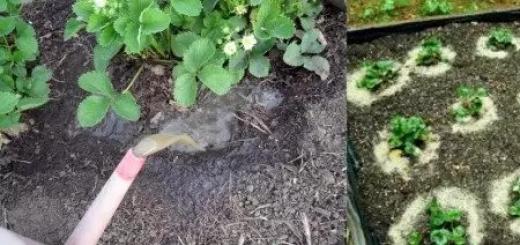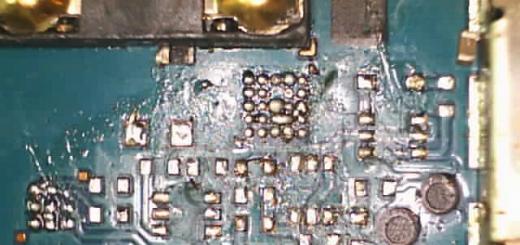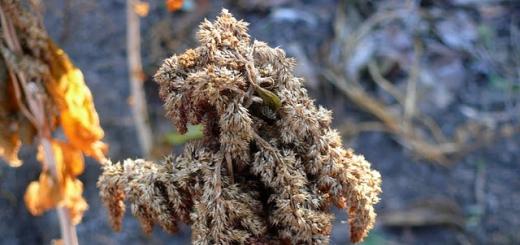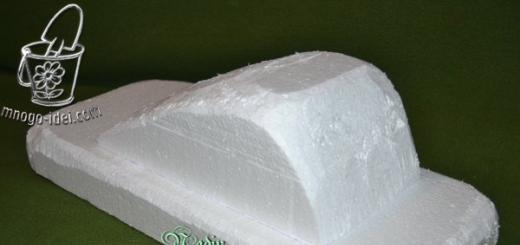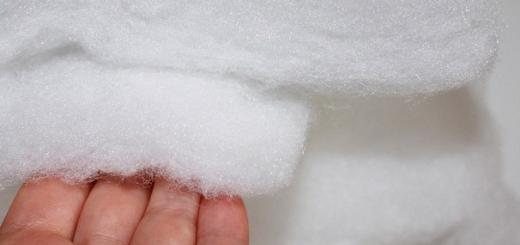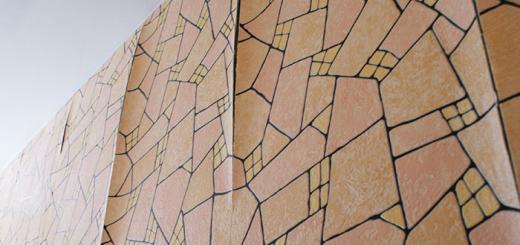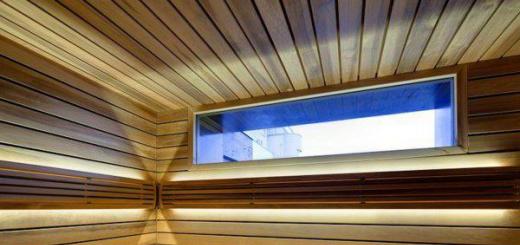Content
When arranging a heating system, it is worth paying special attention to the installation of a channel through which combustion products are discharged into the external environment. A chimney for a gas boiler in a private house requires competent selection of materials, pipe manufacturing, project development taking into account all SNiP requirements, and compliance with the construction installation technology. Errors at any stage will result in a decrease in boiler efficiency and, accordingly, unnecessary energy costs and an increase in emissions into the atmosphere. Remodeling a chimney is a labor-intensive and costly undertaking.
Chimney pipe for gas boiler
Basic requirements for the installation of chimneys
The design and installation of a chimney for a boiler unit that runs on gas fuel must be carried out in accordance with the standards in force in Russia. Violation of the installation and operation rules is dangerous to the life and health of people.
For the installation of heating equipment, a separate building is usually allocated, a room is equipped in the basement or on the ground floor of the house. The boiler room is equipped with a chimney in accordance with the standards prescribed in SNiP acts 2.04.05-91. The chimney design must:
- Provide draft that allows you to effectively remove exhaust gases and maintain the boiler efficiency at the required level.
- Withstand prolonged heating to high temperatures.
- Have completely sealed joints of the constituent elements.
- Be solid in places where it passes through the roof, walls, ceilings.
- Have a condensate collector (this element is designed to collect and remove liquid from the system).
- Have no more than three turns throughout.
- Be equipped with inspection hatches at all turns, as they are places where soot accumulates.
- Have a length of horizontal branches of no more than one meter (if any);
- Elevate above the roof to provide the required draft intensity and eliminate the risk of reverse draft when combustion products enter the room through an open-type combustion chamber.
- Placed at a distance of 5 cm or more from structures with a non-combustible surface and at least 25 cm from flammable materials.
 The chimney is installed in accordance with SNiP 2.04.05-91
The chimney is installed in accordance with SNiP 2.04.05-91 The size of the internal cross-section of the chimney must be no less than the diameter of the smoke pipe of the boiler unit. If it is planned to connect two devices to the chimney, its cross-section must be increased with the expectation of simultaneous operation of both units and be the total size of the cross-sections of the pipes.
Chimney: principles for choosing materials
Requirements for chimneys force you to carefully consider the choice of material from which it will be installed. When choosing a material, you should focus on the type of energy carrier that you plan to use for heating the house. Please note:
- Flue gas temperature (the material must have a margin of thermal stability relative to the standard flue gas temperature of the selected fuel).
- Resistance to corrosion (combustion products contain aggressive substances).
- Tendency to form condensation in the chimney duct.
- Pressure inside the chimney duct (the chimney can be designed for natural draft or turbocharging).
- Resistance to fire of soot deposits on the internal walls (short-term temperatures can reach +1000 °C).
If a gas boiler is used as a heat source, then its manufacture requires a material designed for constant heating up to +200 °C and short-term heating up to +400 °C. Since the combustion of natural and liquefied gas does not produce sulfuric and hydrochloric acid, materials belonging to the first class of corrosion resistance can be used.
Let's consider what materials are popular for arranging chimneys for gas boilers.
Brick
Brick is a classic option for constructing a chimney, but today modern design solutions compete with it. The brick chimney pipe is located inside the building, passing through the ceilings and roof. Sections of the structure that are located in unheated rooms or on the outside of the building require high-quality insulation to prevent cooling of the flue gases. To make a brick chimney, use red brick (solid, M150 and above), lime or lime-cement mortar.
 Types of brick chimney
Types of brick chimney Brick pipes compare favorably:
- high heat resistance (withstands heating up to +800 °C);
- fire safety;
- durability;
- aesthetic appearance.
But for a gas boiler, a brick chimney is not the optimal solution. Due to the relatively low temperature of the exhaust gases, condensation will form on the inner walls of the smoke duct. Moisture can seep onto the outer surface of the pipe and destroy the brick. To compensate for this disadvantage, steel or ceramics are installed in the brick chimney duct, which are not afraid of condensation.
 Condensation appearing on the wall of a building
Condensation appearing on the wall of a building The disadvantages of brick include the roughness of the surface, which is why such pipes quickly become overgrown with soot and require regular cleaning to prevent its fire. Due to overgrowth, a decrease in traction intensity also occurs. Another drawback is the heavy weight of the structure; it requires a special foundation, which adds labor-intensive work and increases installation costs.
Stainless steel
The chimney system for a gas boiler can be made of heat-resistant stainless steel, resistant to aggressive environments. This material, with a thickness of 0.6 mm, is designed for heating up to +500 °C. To install such a chimney, ready-made pipes and shaped elements are used - bends, tees, adapters, etc. The system can be used as a stand-alone chimney or installed inside an existing brick duct.
 Stainless steel chimney
Stainless steel chimney The advantages of stainless steel smoke exhaust structures include::
- simple and quick installation due to the light weight and design of the elements, no need for a foundation;
- maintainability – the damaged area is quite easy to replace;
- smoothness of the inner surface - layers of soot do not settle on it, narrowing the working cross-section of the chimney and reducing draft, the channel is easy to clean, there is no risk of soot ignition;
- corrosion resistance;
- the ability to install complex systems;
- tightness of the joints of the elements, which allows the use of pipes to create forced exhaust of combustion products.
The disadvantages of steel chimneys include the high cost of structural elements compared to options made of brick or ceramics. Relatively low heat resistance is critical for solid fuel boilers, but for gas units this indicator is sufficient.
 Sandwich pipe structure
Sandwich pipe structure There are several types of steel chimneys. The choice depends on operating conditions, climatic features, and boiler design. To arrange a smoke exhaust duct you can use:
- Single wall pipes with round cross-section. Made from sheet stainless steel, they are the most affordable option. Typically used as a sleeve inside a brick channel or mounted in a bathhouse and equipped with a water jacket to use the thermal energy of exhaust gases to heat water in the shower.
- Single wall pipes with oval cross-section. They are used for lining an existing brick chimney with a cross-section in the form of an elongated rectangle.
- Sandwich pipes. This is a double-walled structure equipped with a heat-insulating, non-flammable layer of basalt wool between the inner and outer pipes. This option reduces the risk of condensation on the inner surface and prevents heating of the outer pipe. This chimney is easy to assemble, fireproof and suitable for installation inside and outside the house.
- Coaxial chimney. It also consists of an inner and outer pipe with a gap between them, but differs in functionality. The inner pipe serves to remove flue gases, and the annular space around it is a channel for air to enter the closed combustion chamber of the gas boiler.
Ceramics
Manufacturers offer ceramic pipes of round and rectangular cross-section. A ceramic chimney requires a special shell that protects it from external damage and reduces the volume of condensate by retaining the heat of the flue gases.
The shell for ceramic pipes is a special structure made of hollow concrete blocks or a finished brick chimney. A non-flammable thermal insulation material – basalt wool – is placed between the pipe and the shell. Since ceramics tend to absorb moisture (it appears on the walls of the chimney as a result of condensation of cooled flue gases), vertical channels are left between the insulation layer and the outer shell for ventilation. The outer section of the chimney must be reinforced with steel rods.
 Ceramic chimney
Ceramic chimney Ceramic chimneys equipped with a steel casing are relatively light in weight and do not require a foundation, unlike floor structures made of brick or concrete blocks.
The advantages of ceramic pipes include:
- chemical inertness and corrosion resistance;
- smoothness of the inner surface (prevents soot from settling, simplifies cleaning of the smoke duct);
- high ability to retain heat (reduces the intensity of condensation formation);
- durability.
Depending on the material, a ceramic chimney can withstand heating up to +650 °C or +450 °C. For gas stakes, the second option is sufficient, since the temperature of the exhaust gases is relatively low.
Asbestos cement pipes
Asbestos-cement pipes, due to their availability, have been actively used for a long time for arranging chimneys. The only advantages of the material include low cost, since:
- the maximum heating temperature of asbestos cement is +300 °C, which is not always enough for safe operation of the chimney (it is not recommended to place the asbestos cement pipe close to the firebox, so the lower part of the chimney duct is often mounted from brick);
- the roughness of the inner surface contributes to the deposition of soot - such a pipe must be cleaned regularly to prevent the soot from igniting, since asbestos cement can explode from sudden heating to high temperatures;
- the material is not resistant to aggressive environments and absorbs moisture, which causes condensation to destroy the pipe over time;
- asbestos cement pipes are quite heavy, which complicates installation;
- It is difficult to make the joints of elements airtight.
 Smoke exhaust duct made of asbestos-cement pipe
Smoke exhaust duct made of asbestos-cement pipe The use of asbestos-cement pipes for gas boilers is possible, but subject to high-quality installation and arrangement of a thermal protective casing, which increases costs and increases the labor intensity of the work. Taking into account the need for frequent maintenance of the asbestos-cement chimney duct, preference should be given to other, more practical materials.
Chimneys for units with an open combustion chamber
A chimney gas boiler is a unit equipped with an atmospheric burner. It takes oxygen from the air in the room and removes combustion products through the chimney duct. To ensure intense movement of gases (draft), the chimney must be vertical (with a minimum number of horizontal or inclined sections, ideally without them) and have a smooth inner surface. The room where the boiler with an open combustion chamber is installed needs good supply ventilation. Without sufficient draft, the efficiency of the unit decreases and the risk of combustion products entering the room increases.
Options for installing chimneys for a floor-standing gas boiler include:
- bringing the pipe out through the wall and then vertically upward to the required height (external or attached chimney);
- installation of a vertical pipe that passes through the ceilings and roof (to move the pipe away from the wall, you can mount two elbows with an angle of 45 degrees, since bends at right angles will become places where soot accumulates intensively and will impair traction).
 Chimney with atmospheric burner
Chimney with atmospheric burner Installing an attached chimney for a wall-mounted boiler is technically easier. It is important to properly arrange the penetration through the wall, observing the size of the fire gap if the wall structure is made of flammable materials. The external exhaust duct needs high-quality insulation, since rapid cooling of flue gases reduces draft and provokes increased condensation. To prevent the structure from being blown away by the wind, it must be securely attached to the wall. The rules require that a tee with an inspection hatch and a condensate collector be installed at the bottom of the chimney.
The main difficulty in installing an internal chimney is the arrangement of passage units through the ceilings and roof. If a steel system is being installed, special “penetrations” are installed, and a gap filled with basalt wool is provided around the walls of the channel made of concrete blocks or bricks.
Features of steel pipe assembly
The assembly scheme for external chimney ducts from steel single-wall or sandwich pipes provides for the arrangement of sealed joints, on the inside of which condensate will not accumulate - for this, the upper pipe is inserted into the lower one with a corrugated edge (assembly “for condensate”).
 Assembling pipes for smoke and condensate
Assembling pipes for smoke and condensate If the pipe runs inside the house, it is more important to prevent combustion products from entering the room, so the pipes are unrolled and the upper element is placed with a corrugated edge on the lower one (“smoke assembly”).
The configuration of sandwich pipes allows you to construct a chimney with a double circuit, internal and external, collecting one of them “for smoke”, and the second for “condensate”. This is the most complex of the options, but the most reliable and effective.
Arrangement of the box
Installing a chimney on a gas boiler may be accompanied by the installation of an external casing around the pipe itself. Such a box is required when arranging a ceramic channel. Other types of pipes are protected by a box with a heat-insulating layer in those areas where the chimney passes through unheated rooms, the attic.
The heat insulator should be basalt wool, which can withstand heating to at least +300 °C. Due to the insulation of the pipe, the main part of the exhaust gases does not have time to cool and condense.
Chimneys for units with a closed combustion chamber
A heating unit with a closed combustion chamber is a gas boiler with a chimney and an air intake pipe through which air from the street is supplied to the burner. The coaxial chimney is supplied ready-made and can be quickly installed on site. Its diameter must match the diameter of the boiler outlet pipe.
 Coaxial chimney
Coaxial chimney During the work, the pipe is connected to the gas boiler pipe and taken out horizontally through the wall at a convenient height (rotated 90 degrees). A number of rules must be followed:
- the gap between the ceiling and the horizontal section of the chimney should be at least 20 cm;
- the outer edge of the pipe must be removed from the surface of the outer wall by at least 30 cm;
- the distance between the chimney and the ground surface must be at least 20 cm;
- there must be at least 60 cm from the edge of the chimney to the wall of the neighboring building.
 Coaxial chimney installation diagram
Coaxial chimney installation diagram In regions with a harsh climate, when choosing a gas boiler with a closed combustion chamber, you should pay attention not only to the amount of kW of power, but also to the presence of protection of the coaxial chimney from freezing. Cold air in the outer contour of the pipe can supercool the condensate and it will freeze on the inner walls, clogging the channel.
Without a competent approach to chimney installation, normal functioning of heating equipment is impossible.
The traditional brick chimney for a gas boiler is quite in demand, despite many existing shortcomings and low thermal characteristics. Despite the apparent simplicity of the design, during the construction of a brick channel, it is extremely important to adhere to the existing standards set out in SNiP. The operational safety and efficiency of gas equipment depends on compliance with the requirements.
Is a brick chimney allowed or not with a gas boiler?
Existing standards allow the use of brick chimneys for gas boilers. At the same time, the conditions that the smoke exhaust system must meet are separately specified. If violations are detected, the gas service inspector may refuse to put the heating equipment into operation.The laying of the channel must be carried out by a qualified mason. It is better to avoid installing a chimney for a brick gas boiler with your own hands, without special construction skills. As practice shows, only an experienced stove maker can take into account all the nuances associated with the calculation and subsequent installation of the structure.
Chimney requirements for a brick gas boiler
The main purpose of the chimney is to safely remove combustion products from the boiler. The essence of all requirements is to prevent possible fire, as well as carbon monoxide poisoning during the operation of heating devices. In particular, SNiP and PB indicate:
From time to time, new requirements for a brick chimney for a gas boiler appear. Even before starting construction, find out about existing standards from the Gas Service. Up-to-date information will avoid unnecessary costs and facilitate the commissioning of the structure.
Mono-brick chimneys for gas boilers
There are several options for brick chimneys, among which the mono-design has the worst thermal performance. Under constant exposure to an aggressive environment, the brick is destroyed, the seams crack and lose their tightness. For this reason, after 5-6 years of operation it will be necessary to repair the pipe and replace damaged areas.During construction, the following conditions are observed: 
The disadvantage of a brick smoke exhaust system is its short service life and high requirements for the quality of the masonry. It is difficult to lay out a chimney correctly yourself, so it is better to use the services of a qualified mason.
Combined brick smoke removal systems for gas boilers
Combined systems have better thermal performance than a conventional brick chimney. The main feature of the design is the presence of a core made of steel, ceramics or asbestos cement. Thanks to the combined installation scheme, the disadvantages inherent in brick channels are almost completely eliminated.When choosing combined systems, it is necessary to pay attention to the technical parameters of the core, which ultimately determine the performance characteristics of the chimney.
Chimneys made of brick and stainless steel
Existing schemes for the construction and restoration of existing chimneys provide for the possibility of using three main modifications, differing in the material of the internal contour. The consumer is offered one of three options:
Before commissioning, old brick chimneys must be lined for use with gas boiler equipment.
Combination of brick and ceramic pipes
 This design is one of the best in its characteristics. Ceramics are resistant to acids and can withstand heating up to 1000°C. A ceramic pipe has good traction, quickly warms up and reaches operating mode.
This design is one of the best in its characteristics. Ceramics are resistant to acids and can withstand heating up to 1000°C. A ceramic pipe has good traction, quickly warms up and reaches operating mode. A free-standing brick chimney with an internal ceramic pipe for connecting a gas boiler is used as an alternative.
Problems with a brick chimney with a ceramic core are extremely rare. The design is distinguished by a long service life and resistance of the ceramic walls of the pipe to burnout. If installed correctly, the chimney will last at least 50 years.

Chimney made of asbestos-cement pipe lined with brick
A chimney pipe made of asbestos pipes, lined with brick, cannot compete in its characteristics with stainless steel and ceramics. Asbestos-cement systems have gained popularity due to their low cost and availability of the material. At the same time, pipes have several significant disadvantages:- Excessive production of condensate– an asbestos-cement pipe, even inside a brick, cools quickly, which leads to large volumes of condensation. As a result, the chimney often becomes damp and the structure collapses.
- Low aerodynamic characteristics– asbestos pipe cannot be used for condensing boilers and gas equipment with a closed combustion chamber.
In terms of its thermal and aerodynamic properties, as well as the ratio of cost and durability, the leading position is occupied by a brick chimney shaft with a stainless pipe inside.
How to make a chimney pipe for a gas boiler from brick
Failure to comply with existing SNiP and GOST increases the danger of a brick chimney with gas heating. Particular attention should be paid to the choice of building material, masonry mortar mixture, and thermal insulation.It is important to prevent accelerated formation of condensation and provide for the possibility of regular maintenance of the smoke exhaust system.
What kind of brick is used to make a chimney for a gas boiler?
To use a chimney from gas appliances, ceramic bricks made from baked clay are used. The material retains heat well and can withstand temperature changes. Making a chimney from sand-lime brick is strictly prohibited. Any ceramic brick is not suitable for a smoke exhaust system, but only a certain brand. Moreover, for the manufacture of the outer and inner parts, material with different markings is used.
Any ceramic brick is not suitable for a smoke exhaust system, but only a certain brand. Moreover, for the manufacture of the outer and inner parts, material with different markings is used.
- Fire resistance - the material is assigned class “A” or “B”. The first is intended for heating up to 1400°C, the second 1350°C.
- Strength - for masonry you need a brick of grade M 250 or M 200. High density leads to an increase in heating time, therefore, it is not recommended to use building material marked M300 or higher.
- Frost resistance– the chimney is made of solid ceramic bricks with a resistance factor of F300.
The chimney can be made from facing bricks, but the material, which can withstand frost, does not tolerate heating/cooling well. After several heating seasons, the surface begins to crack and crumble. When condensation occurs, the facing material loses its strength.
It is correct to make a brick chimney for a gas boiler in a private house, from solid brick, class “A” or “B”, with strength M 250 and frost resistance F300.
What masonry mixture is used during construction
The composition of the mixture for laying a brick chimney pipe is selected depending on which part of the structure is being built. As practice shows, it is optimal to use ready-made fireproof and heat-resistant masonry mixtures. The resulting solution is acid-resistant and able to withstand negative atmospheric conditions.If there is no financial opportunity to purchase a ready-made adhesive composition, the mixture is made independently.
- Clay mortar– is heat-resistant, used for the construction of structures located in the house. Clay gets wet when exposed to water, so the mixture is not suitable for the outer parts of the chimney.
- Cement composition– the use of cement mortar is necessary for parts of the chimney located outside the building. To increase strength and give the solution acid-resistant characteristics, special additives are added to the finished mixture. The same solution is used in the manufacture of the chimney foundation.
The finished composition of the solutions includes all the necessary additives and plasticizers, which allows you to make a perfectly even seam without leaving voids. The only drawback is the high cost of masonry.
How to insulate a brick chimney
The need to insulate a brick pipe is associated, first of all, with the need to reduce the amount of condensate produced. The walls are heated above the dew point faster, which leads to a decrease in the volume of moisture that falls.The technology for insulating an external brick chimney is as follows:
- First you need to repair the brick pipe. Damaged areas are replaced. Sagging from the masonry mortar is removed, the pipe is primed.
- To level the pipe and remove cracks and chips that have appeared, you will need to plaster the brick surface. Work is carried out on lighthouses. The solution is allowed to dry. It is prohibited to heat the chimney during this period.
- The brick pipe is thermally insulated - the insulation thickness is 5-10 cm for external cladding, it is attached with a special adhesive composition, after which the slabs are fixed with anchors. A reinforcing mesh is pulled over the top, embedding it in a layer of glue.
- Finishing is in progress.
To insulate a brick pipe in an unheated attic, use mineral wool. The material costs approximately half as much, and in the absence of precipitation, it performs well as a thermal insulator.
Chimney installation above the roof
Most often, the rules related to the passage of roofing, installation and cladding of the roofing part are violated. The rules for passing a brick chimney through a wooden ceiling when heating with a gas boiler are as follows:- When passing through slabs or roofing, observe fire breaks. SNiP 01/41/2003 states that from an uninsulated chimney to combustible structures there must be at least 38 cm. For insulated pipes, the gaps are reduced to 5 cm. The space is filled with basalt insulation.
- For penetration, a special box is made, installed under the roofing.
- The chimney head is insulated with basalt slabs, covered with ceramic tiles or lined with facade plaster.
- The height of the pipe is calculated depending on the distance from the ridge. There is a general recommendation that the brickwork in a private house should be higher than the top level of the roof. In some cases, in accordance with this instruction, it will be necessary to rebuild the existing brick chimney to install a modern gas boiler.
- The pipe head is covered with a deflector to increase traction force.





Connecting a gas boiler to an existing brick chimney is carried out only if the pipe is of sufficient height and after mandatory lining of the system.
How to prevent condensation and methods for removing moisture
The main factors for the formation of condensation are the following reasons:
Condensate moisture is removed using a special condensate drain that hermetically seals the chimney duct.
Repair of a brick chimney pipe from a gas boiler
Reconstruction of an old chimney may be required in several cases:- A defect discovered during regular inspection of the masonry.
- Re-equipment of the smoke exhaust system, allowing the use of conventional brick stove chimneys for modern gas boilers.
Why does the brick on a gas chimney collapse?
The frequency of checking brick chimneys is at least once a year, before the onset of the heating season. Inspection shows the presence or absence of mortar falling out of the seams, brick cracking and other violations. The causes of destruction are:
Is it necessary to line a brick chimney and with what?
Chimney lining is required in the following cases:
To avoid destruction of the structure of the brick smoke exhaust system in the future (average service life is 6 years), lining is carried out. A stainless pipe or corrugation is installed in the chimney.
Additional sealing of chimneys in brick walls for individual gas boilers is required only if ducts intended for ventilation are used.
How to clean a brick pipe with gas heating
You can clean the pipes yourself, which, as practice shows, often leads to the destruction of the brickwork. Without certain qualifications, it is not recommended to clean chimneys, since during the work the internal walls of the channel are destroyed.Alternatively, you can call a specialist to clean it. The work will cost on average from 600 to 3000 rubles. The time taken is 3-6 hours, depending on the degree of contamination.
Advantages and disadvantages of connecting a gas boiler to a brick chimney
Brick chimney ducts have certain pros and cons. The advantages include:- Low cost with the possibility of using an existing pipe.
- Possibility of connecting a gas boiler with an open combustion chamber to a brick chimney.
- Availability of construction and finishing materials.
- Short service life.
- High requirements for the quality of masonry and the qualifications of the worker carrying out construction work.
- The need for insulation.
- There are many restrictions - making a gas chimney in an external brick wall, using an old duct without liner, connecting the system to condensing boilers and equipment with a closed combustion chamber is prohibited.
The chimney pipes that we see from the street, rising above the roof of the house, are only a small part of the entire complex structure, which is responsible for processing combustion products and removing smoke from the room. It does not matter what fuel you use for heating equipment; in any case, it must be equipped with a special system for the release of combustion products. It is very important to have an idea about the structure of the chimney system in your home, since this knowledge will help you use the gas boiler correctly and competently.
Must be designed in accordance with the requirements of SNiP II 35, and SNiP No. 2.04.05 “Design of smoke and ventilation ducts.”
It is worth remembering that everyone must have a SEPARATE disposal of processed combustion products from gas boilers, stoves, and other gas household appliances!!!
Chimney for gas boilers according to SNiP
In all buildings, it is allowed to connect no more than two heating furnaces or water heaters to one smoke duct, which are located on the same or possibly different floors of the house. But in this case, a distance of half a meter from each other must be maintained - at different levels of the floors of the house, or at the same level - a cut of 0.5 meters high.
Compliance with the cross-section of the chimney duct is also an important point at the design stage of the chimney itself. The circumference of the chimney pipe must be no smaller than the circumference of the gas boiler pipe. The cross-section of the chimney when connecting two devices to it must be calculated taking into account their simultaneous operation.
If you decide to install a brick chimney, then you should adhere to DBN-V.2.5-20-2001-“Gas supply” and use: frost-resistant brick (Mrz125) or clay brick, as well as heat-resistant concrete in high-rise buildings, and asbestos pipes in small buildings . It is known that today gas boilers have high efficiency - even perhaps 95%. At the same time, the temperature of the processed combustion products at the outlet is very low, resulting in the formation of a lot of condensate. In turn, the resulting condensate, or rather its chemical composition, destroys the brick chimney. Based on the above, a brick chimney must be lined/lined.
When a single-layer pipe made of stainless, acid-resistant steel is installed in a brick chimney, the process is called. Thanks to this method of installing a chimney, the process of heating the chimney duct occurs much faster in relation to the condensate temperature. When gas is burned, harmful condensate and an acidic environment are formed, and this chimney design helps protect against their negative effects.
If your chimney duct has non-standard dimensions or may simply be crooked for some reason, then you can resort to lining the duct, i.e. use a flexible hose.
The best shape for any chimney duct is a cylinder shape. In second place is the oval shape of the pipe, then the square shape. Because Since combustion products and smoke produced by a gas boiler rise up into the chimney in a spiral, it is better to use a cylindrical pipe. If you use a square-shaped pipe, then dirt will accumulate in the corners of the pipe and the quality of traction will deteriorate.
Requirements for chimneys according to SNIP
- The chimney for a gas boiler, according to SNiP, must be vertical. The slope of the chimney is allowed by 30 degrees and with a side deviation of 1 m, while it is necessary to observe the cross-sectional area of the inclined sections of the chimney (it must be no less than the cross-section of the vertical sections).
- The part of the pipe that connects the gas boiler to the chimney must be fixed only vertically. The length of this part of the pipe should be more than half a meter (if you count from the bottom of the smoke exhaust pipe of the gas boiler to the horizontal section of the axis).

- In new houses, the total length (total) of the horizontal connecting parts of the chimney pipe should be no more than 3 m, and in existing houses - no more than 6 m.
- To the gas side. device, the pipe inclination should be 0.01 degrees, no less.
- No more than 3 turns on chimney pipes are allowed, and the bend itself must have a radius of curvature no less than the diameter of the pipe.
- Below the connection point of the pipe from the gas boiler to the chimney there should be a condensate collector and inspection.
- The distance from the connecting section of the pipe to the ceiling (or wall) made of non-combustible material is allowed to be no less than 5 cm. When using flammable materials - no less than 25 cm. It is possible to reduce the distance from 25 to 10 cm, but only with the use of protection (steel + asbestos, at least 3 mm thick). Thermal insulation must extend beyond the dimensions of the connection. pipes 15cm on each side.
- The possibility of sagging fastenings of connecting pipes and suspension must be excluded. Each link of the chimney connecting pipes must be tightly connected to each other, without gaps. The links must fit into one another in the direction of the flue gases - no less than ½ (half) of the smoke diameter. pipes. It is also necessary to install a tight connecting pipe to the smoke duct. To ensure that the end of the pipe does not protrude beyond the channel wall, limiters are used - a corrugation or a washer.
- If you connect several devices at once that do not have draft stabilizers to a common chimney, then the chimney pipes must have dampers (their opening diameter is at least 15 mm).
- In the dampers that are installed on chimneys there is gas. boilers, the holes must be at least 50mm (in diameter).
- The free and complete release of waste combustion products into the surrounding atmosphere is important.
- Each heating device must have its own separate chimney.
- In order to clean exhaust gases, recesses with a depth of 250 mm must be placed in the chimney channels.
SNiP provides the following parameters for the height of the chimney for a gas boiler:
The height of the chimney pipes of a gas boiler relative to the roofs should be:
- not less than 500 mm above the roof ridge or parapet - if the pipes are located at a distance of up to 1.5 m from this ridge, parapet;
- not lower than the ridge/parapet - if the chimney is located at a distance of 1.5-3 m from the parapet/ridge;
- not below the border, which is drawn from the ridge down at a 10° angle to the horizon - when placing a chimney from the ridge of the roof or parapet, more than 3 m;
- at least 1200mm above a flat roof.

In any case, the height of the chimney above the touching part of the roof (adjacent) should be no less than half a meter, and for buildings where the roof is combined (flat) no less than 2 m.
Installation on chimneys for gas water heaters/boilers, umbrellas and other nozzles is not permissible (the only exception would be CONE, since it is considered a transition from a thermal pipe to a single-wall pipe).
Chimneys in the walls and ventilation ducts are allowed to be combined. But it is necessary to maintain their separation along the entire height with special fences, the thickness of which must be at least 120 mm. The height of exhaust ventilation ducts located close to chimneys must be taken equal to the height of the chimneys themselves.
The removal of waste combustion products is permitted from: industrial enterprises that use gas appliances, as well as from boiler houses, housing and communal services. It is permitted: the release of combustion products into the atmosphere through the external walls of gasified premises without a vertical channel from heating and gas equipment with a sealed combustion chamber. Let us allow the combustion product to be removed through the roof of the building into a vertical smoke channel.
The length of the horizontal section of the smoke duct from the heating device with a sealed combustion chamber when it passes through the external walls is taken to be no more than 3 m.
Basic rules for installing a chimney
- The installation of a gas boiler should only be carried out when all the rules for installing a chimney are observed.
- It is necessary to ensure the correct selection of chimney parameters, on which the further operation of the gas boiler depends.
- It is important that all installation work is carried out by highly qualified workers, while observing all fire safety rules.
- All manufacturer's recommendations must be followed.
- It is necessary to choose the diameter of the chimney duct the same diameter as the device itself or perhaps a little larger.
- The air flow in the chimney duct should have a speed of 10-25 meters per second (NPB-98).
Forbidden:
- Make channels from loose, porous, slag concrete and other materials;
- Lay smoke exhaust pipes from stoves/appliances through living rooms;
- Install a damper when connecting devices with draft stabilizers to the chimney itself;
- Install the smoke duct outlet through the external walls:
— in entrances, covered passages, arches;
- closed balconies, bay windows, loggias;
- in monument buildings, without permission from the special department that protects them;
— through the walls of buildings facing streets/squares that have urban, historical and architectural value;
- in buildings in which the installation of gas appliances is prohibited in accordance with DBN No. V.2.2-9, SNiP No. 2.08.01, SNiP No. 2.04.05.
Openings of smoke ducts on the outer wall of buildings when combustion products exit from the heating device through the outer wall without vertical. channel, should be placed in accordance with the manufacturer’s instructions, but at a distance not less than those indicated in the following table:  Chimney pipes must be checked at least twice during the heating season and must be performed by highly qualified workers. They should also conduct an inspection of the chimneys themselves.
Chimney pipes must be checked at least twice during the heating season and must be performed by highly qualified workers. They should also conduct an inspection of the chimneys themselves.
A chimney for a gas boiler according to SNiP will always work efficiently and, most importantly, taking into account all legal standards!
One of the most important parts of a solid fuel boiler is the chimney. Through it, flue gases and soot are released into the atmosphere. It ensures high boiler operating efficiency and high efficiency.
Intensive use of the chimney pipe leads to clogging. The cross section decreases, combustion products cannot pass through quickly. As a result, traction decreases, the device begins to work in heavy duty, and efficiency decreases.
To prevent soot accumulation and for the boiler to function normally, the chimney pipe must be made of appropriate materials according to well-executed drawings. In addition, it is very important to correctly calculate the diameter and cross-section.
When the system has insufficient thrust, poor fuel burn occurs. As a result, soot is formed. It gradually clogs the pipe passage, reducing its cross-section.
You can, of course, achieve increased draft by increasing the cross-section of the chimney pipe. But this will not lead to a positive result. The heat from the boiler will simply leave the room through the pipe. To be able to regulate the draft, the boiler is equipped with special dampers.
The appearance of draft is based on the difference in temperature between the room and the environment. The draft becomes maximum when the cold weather sets in. A small temperature difference is enough so that combustion products do not settle on the surface of the pipe, but escape into the atmosphere. This can happen under one condition. The chimney must be properly designed and installed.
When the boiler starts working, outside air is supplied to the combustion chamber. Due to this, the combustion process is supported. Exhaust gases are directed into the chimney and quickly thrown out.
If the pipe diameter is insufficient, exhaust gases begin to accumulate inside the combustion chamber. As a result, the fire begins to fade, and there is heavy smoke in the room.

The traction force depends on several factors:
- Pipe length.
- Presence of turns.
- Bends.
For example, the presence of a right angle in a structure greatly reduces its maneuverability. This becomes noticeable when the atmospheric pressure decreases. To correct this situation, a special stabilizer is installed in the rod.
Additional features of the chimney
It should not react to high temperatures. Therefore, a chimney made of particularly heat-resistant materials is installed in a solid fuel boiler. When coal or wood burns in such a boiler, the temperature of the smoke is much higher than the temperature of gas combustion. For example, the smoke temperature of a gas boiler does not exceed 200 degrees. When wood burns, the temperature can exceed 300 degrees. If the boiler is heated with coal, the temperature reaches 600 degrees. Sometimes the temperature jumps. It begins to rise when heated.
It is prohibited to ignite the combustion chamber with solid fuel, gasoline, or other flammable substances. This option can cause a soot fire due to a burnt-out chimney. It is strictly forbidden to try to remove contaminants in this way.
Chemical neutrality
When a boiler uses solid fuel for operation, materials that are neutral to the effects of chemical elements must be used. Do not forget that the resulting condensate contains a large amount of sulfuric acid. That is why the chimney material should not be afraid of an aggressive acidic environment
Reliability
This requirement remains very important for the operation of the boiler and traction. However, many are stopped by the price; they simply forget about safety. Of course, it is much easier to replace a completely broken chimney. But if there is no draft, the room will begin to fill with carbon monoxide. It has no odor, so you can simply fall asleep in the room and never wake up again.
How to calculate chimney sections
When choosing, you need to first measure the existing cross-section of the pipe. It should have the same dimensions. It is desirable that the sizes match. If the diameter is larger, a drop in pressure will occur and the traction force will decrease.
It is prohibited to operate two solid fuel boilers with one chimney. Each must be equipped with a separate pipe. With the correct selection of diameter, as well as competent installation, there will always be good traction.
The cross-sectional size (sq. m) is determined by the formula:
volume of fuel consumed (m3/s) / gas velocity.
The chimney can have different cross-sectional shapes:
- Circle.
- Rectangle.
For normal operation, you can use any option, but a round section is still much preferable. When smoke moves inside the pipe, it spirals. Any foreign part in the pipe creates resistance to the movement of the gas flow.
If the inner surface of the pipe is rough, the gas velocity will decrease. When smoke, during circular movements, collides with a right angle, a sharp change in trajectory occurs, and mixing occurs. As a result, soot settles in the corners.
Constant, thorough cleaning will be required.
What materials should exhaust pipes be made of?
With a wide variety of materials, only a few types can be used to operate a chimney. The main ones are:
- Brick.
- Metal.
- Ceramics.
 The most popular are pipes made of brick. They are able to withstand very high temperatures. Its maximum reaches 1000 degrees. Today, on the roof of modern expensive cottages you can see an original chimney made of eurobrick. However, upon closer examination, you can see pipes inserted inside the brick chimney. They can be steel or made of ceramic. This is explained very simply. One brick is not suitable for normal operation. In other words, it will work, but not for very long. It will quickly be destroyed by caustic condensate. Therefore, a liner is inserted into the brick pipe. Free cavities are filled with insulating material.
The most popular are pipes made of brick. They are able to withstand very high temperatures. Its maximum reaches 1000 degrees. Today, on the roof of modern expensive cottages you can see an original chimney made of eurobrick. However, upon closer examination, you can see pipes inserted inside the brick chimney. They can be steel or made of ceramic. This is explained very simply. One brick is not suitable for normal operation. In other words, it will work, but not for very long. It will quickly be destroyed by caustic condensate. Therefore, a liner is inserted into the brick pipe. Free cavities are filled with insulating material.
Sandwich pipes made of ceramics can withstand very high temperatures. It can exceed 1200 degrees. This value is much higher than the maximum smoke temperature after coal combustion.
Such a pipe is not afraid of condensation and any atmospheric phenomena. Condensate is drained through a special drain hole. Sometimes for this purpose an additional container is made at the end of the watering can. A ceramic chimney pipe is installed on the facade or inside the building.
A chimney of the Schiedel Uni brand, if a soot fire occurs, is able to cope with such a thermal load. When burning, soot heats up to a temperature of 1100 - 1200 degrees.
Disadvantages of ceramics
They do not have a beautiful appearance. Their cost is much higher than their steel counterparts. Installing these pipes requires construction skills and experience. These pipes remain popular among consumers with low incomes.
Metal chimney
For its manufacture, ordinary steel or stainless steel is used. Unfortunately, steel chimneys cannot withstand
aggressive environment. When the boiler operates continuously, the pipe will become unusable in a very short time and may cause a fire.
The composition of the stainless steel used includes special additives consisting of several chemical elements
- Titanium.
- Nickel.
- Molybdenum.
They are the ones who save stainless steel from corrosion. For installation
The following steel grades are used in boilers:
- 316 L.
They contain substances that allow steel to withstand temperatures within 700 - 800 degrees. These grades of steel are not afraid of condensation, they are neutral to acids, and do not react with other aggressive substances.
The cost of a chimney made of stainless steel is affordable to the average buyer. It is considered most suitable for installation in a solid fuel boiler.
Glass chimney
Very rare. Its positive qualities include:
- Low thermal inertia.
- Corrosion never occurs.
- Original look.
The cost of such a design is very high. Therefore it is very rare. In addition, its installation is very labor-intensive and costs a lot of money.
Device and installation
When installing a metal chimney, work starts from the bottom, gradually moving upward. Pipes can be connected in several ways:
- By the movement of smoke.
- For condensate
When the boiler is connected to the chimney according to the first option, installation occurs from the boiler. The second option, on the contrary, goes to the boiler. The metal structure consists of several parts:
- Cup.
- Pipe sandwich.
- Condensate collector.
- Spark arrestor.
- Header.
- Cleaner.
To create a reliable connection, establish:
- Adapters.
- Tees.
The joints are fastened with clamps from the outside.
Technological requirements
The following technical requirements must be observed:
- A special area must be provided to disperse the smoke. It is a vertical pipe installed behind the nozzle of a solid fuel boiler. The acceleration section is made one meter high.
- The chimney is installed only vertically. Deviation of no more than 30 degrees is allowed.
- Deflections are prohibited.
- The length is very important (3 - 6 meters).
- Three horizontal sections are allowed. Moreover, the length of each should not exceed half a meter.
- The height of the head above the roof must exceed 100 cm.
- The pipe is attached to the wall in 1.5 meter increments.
- To create a sealed joint, the pipes are generously lubricated with heat-resistant sealant.
To obtain ideal draft, it is necessary that the chimney design has a minimum number of turns. A straight pipe is considered best.
The chimney can be installed inside or outside the building. For the first option, it is necessary to protect the pipe so that it does not come into contact with flammable materials. A special metal screen is used, installed where the pipe passes through the ceiling. The chimney must be located at a distance of more than 25 cm from the wall.
External structures look much safer. They are much easier to maintain. Masters consider this method the most preferable.
Pipe height
This size is determined by SNiP, which sets certain parameters:

- If the roof is flat, the chimney should rise 1.2 meters above it.
- If the chimney is located near the ridge, and the distance is less than 1.5 meters, it should rise above the ridge by 0.5 meters or more.
- When the pipe is located in the range of 1.5 - 3 meters to the ridge, it should not be below the ridge line.
- If the location of the chimney from the ridge exceeds 3 meters, its height should be on a line extending from the ridge, maintaining an angle of 10 degrees relative to the horizon line.
To determine the height of the chimney, a large number of indicators are taken into account. The parameters presented above apply only to gas equipment. To make an accurate calculation, you need to use the services of a specialized company.
Fire safety technology
It is allowed to install a chimney in accordance with the requirements:
SNiP 2.04.05–91U.
DBN B 2.5-20–200.
NAPB A.01.001–2004.
Installation should only be carried out by professionals. The cross-section of the chimney must correspond to the value specified by the manufacturer in the instructions supplied with the boiler.
If there is a horizontal section, its length should not exceed one meter.
The design must provide for the possibility of draining condensate, as well as cleaning the smoke exhaust channel.
How to connect a chimney
All connections of parts to the nozzle of a solid fuel boiler are made with a heat-resistant sealant that can withstand temperatures in the range of 1250-1500 degrees.
When the diameter of the chimney does not match the size of the chimney outlet, an adapter is installed to create a tight joint.

How the parts are assembled
Any single-walled, as well as sandwich, with insulation, are assembled in only one option: “pipe is inserted into pipe.” The connection points of the chimney parts do not require the installation of additional clamps.
If the structure is made of special stainless steel, assembly is carried out only using condensate. In this case, condensate, as well as the resulting tar deposits, will never get out; they will flow along the walls of the pipe directly into the condensate drain.
If a revision is used in the chimney and tees are installed, all parts are assembled “according to the smoke.” The assembly of vertical parts extending from the tee is carried out “using condensate”.
If it is necessary to line the channel, the gap formed between the pipe and the channel must be more than 4 cm. It is necessary when the metal expands when heated.
To ensure that the chimney sandwich parts have a more rigid fastening, rivets are installed or screws are screwed in.
Fixing the chimney
The pipe is attached to the wall only with special materials.
The single-wall structure must be fastened with a fastening step of 1.5 meters on all vertical sections of the pipe.
If the sandwich chimney does not have a supporting structure, it is necessary to secure each element.
If the system uses a 45–87 degree tee or a 45–90 degree elbow, installation is carried out in such a way that the load on the rotating parts of these parts is completely eliminated.
If installation requires additional support, use a floor stand installed under the inspection.
When the chimney pipe is raised above the roof by more than 1.5 meters, a bracket must be installed under the brace.
Passage through floors
To make a passage through the wall of a house or its ceiling, it is necessary to use the building codes that are in force in Ukraine today.
If a sandwich chimney with insulation passes through wooden walls, a liner must be installed and another layer of thermal insulation is applied.
When a chimney pipe is installed through the roof, builders must install a special additional pipe part, the so-called “roof”. Another additional layer is created, consisting of fireproof insulating materials.
The final stage of construction
When a brick chimney is lined, its upper part is covered with an additional part - the end.
Usually the top of the pipe is covered with a deflector or a beautiful fungus.
If the building's roof covering is made of a fire-hazardous material, such as bitumen shingles, a special spark arrestor is mounted on the top of the chimney.
If a gas boiler is installed in the house, installing a deflector is strictly prohibited. According to current regulations, the upper part of the gas device pipe is always kept open.
Starting the chimney
Check again that there are no flammable or flammable objects near the chimney to prevent a fire.
The protective film is removed from the parts.
The gate that regulates the traction force opens.
When installing gas boilers, it is necessary to strictly follow the standards. Also, strictly according to the standards, it is necessary to install a chimney for a gas boiler. Although the temperature of the flue gases is low and has no color, it will cause no less harm, but more - because leaks are poorly detected. Therefore, you must immediately do everything diligently, paying special attention to the tightness of the joints.
Requirements for chimneys for gas boilers
All requirements for smoke ducts are specified in regulatory documents - SNiP 2.04.05-91 and DBN V.2.5-20-2001. Their implementation is mandatory. To summarize, everything can be reduced to several points:
These are the basic requirements. They must be followed. They provide the required degree of security. After all, the fact that the exhaust of a gas boiler is colorless does not mean that it is harmless. Therefore, maximum attention must be paid to all aspects of ensuring safety.
Boiler designs and methods of installing chimneys
There are two types of burners for gas boilers:

It is clear that the choice of chimney type primarily depends on the type of combustion chamber. In one case it should be a coaxial pipe, in the other - a regular one. But besides this, there are many more design nuances.
What material
A chimney for a gas boiler in a private house can be made from different materials. The main requirement is resistance to chemically aggressive substances, inability to pass gases. Traditionally, several materials are used. Let's talk in more detail about the advantages and disadvantages, as well as the assembly features of each of them.
Brick chimney
Today this is no longer the most popular type of chimney. It turns out to be heavy and requires a foundation at high altitudes. In addition, laying a brick chimney takes a lot of time.
However, this type of chimney has a number of negative qualities. The first is in its internal walls are not smooth, which contributes to the accumulation of soot and impairs traction. Second - to Irpich is hygroscopic. Therefore, the condensate flowing down the walls is absorbed, which contributes to rapid destruction.

To solve these problems, a smooth pipe of suitable diameter is inserted inside the brick chimney. This is usually a stainless steel or asbestos pipe. When building such a combined chimney, attention must be paid to the following things:
- The joints of the liner pipe must be made airtight. If these are ordinary or sandwich pipes made of stainless steel, everything happens as standard - we collect the chimney using condensate. If the liner is made of asbestos-cement pipes, you will have to take care of the tightness of the joints. Moreover, covering the joint with cement is not an option. Such a connection is not sealed in any way - condensation will be absorbed. We will have to come up with sealed clamps and use hydrophobic (water-repellent) compounds. Moreover, they must also be chemically resistant. As an option, you can consider coating the joints with heat-resistant sealants with an operating temperature of about 200°C.
- To ensure that condensation forms as little as possible, it is better to insulate the pipes (even inside a brick casing). To do this, it is advisable to use insulation that is not afraid of getting wet.
- A condensate collector must be attached to the liner pipe below. Access to it must be free.
If you make a chimney for a gas boiler according to these rules, then even with abundant condensation it will be easy to deal with.
Stainless steel - single wall pipes and sandwich
Modern gas boilers are designed so that the temperature of the flue gases at the outlet is not very high. Therefore, condensation always forms. With good draft, most of it flies into the pipe; with good insulation, the remaining part evaporates. So it turns out that liquid is not always present in the condensate collector. But condensate itself is formed when the gas boiler is running all the time. Sometimes in larger quantities, sometimes in smaller quantities. In this regard, the requirements for stainless steel for a chimney are high: it must withstand prolonged contact with caustic substances. These requirements are mainly met by food grade stainless steel. Yes, it costs a lot, but only it will serve for years.

Now let’s talk about whether to make a chimney for a gas boiler from a single-wall pipe or from sandwich pipes. In order for condensation to form in minimal quantities, it is desirable that the chimney does not cool down. That is, it needs to be insulated. And although the sandwich chimney has a lining made of insulation, when laying it externally (on the street) it is also better to insulate it - it will last longer, the draft will be better. But in this option, less insulation will be required - one layer, whereas a regular pipe may have to be wrapped in two or even three layers. So the costs of installing a chimney from a single-wall stainless pipe and sandwiches will be comparable. It’s just that in the first case you will have to use more insulation, and in the second less.
If we talk about reliability, then sandwich chimneys are more reliable, if only because they consist of two layers of metal. By the way, if you are insulating the chimney, the outer pipes can be made of galvanized steel - they do not come into contact with condensate, the temperatures are low, and the appearance is not important, since everything will be wrapped in insulation.
Ceramic chimneys
Ceramic chimneys are good for everyone: they are durable, reliable, and tolerate contact with aggressive substances well. But they have two significant drawbacks. First, they are expensive. Secondly, they have a lot of weight, so when installing a high chimney they require a foundation. And this is an additional expense to the already considerable amount. But the service life of such a chimney is calculated in decades.

Asbestos cement pipes
This was once the most popular type of material in the construction of chimneys for a gas boiler in a private house. The material, of course, is porous, has rough walls, and its cross-section is not ideal (not round, but rather oval). But this is perhaps the cheapest option.

When using asbestos-cement pipes for the chimney of a gas boiler, you must:
- Make it as straight as possible, trying to make the joints even.
- Seal the joints. As has already been said, simply covering it with cement is not an option. A tight connection is required. Several solutions to the problem are the use of hydrophobic additives in the mortar, coating the dried cement mortar with sealant, and the use of sealed clamps.
- To reduce the amount of condensate, make the pipe high and insulate it well.
In general, nothing new, all the same rules as for the materials described above, but the hassle of joints is added. So, as a result, the price of a chimney made from asbestos pipes is almost the same as that made from stainless steel.
For boilers with an open combustion chamber
For gas boilers with an atmospheric burner, a smoke channel is required that provides good draft - the removal of combustion products occurs due to the movement of air through the pipe. Therefore, it is made as straight as possible, preferably with smooth walls. There are two options:

Which option is better? An external chimney is easier to implement - with an outlet through the wall. It is only important to pass through the wall correctly (maintain a fire gap if the walls are flammable). But this option requires good insulation and high-quality fastening to the walls. And even under such conditions there is usually a lot of condensation. Therefore, the installation of a tee and a condensate collector at the outlet is mandatory.

In the case of a chimney outlet through the roof, there are at least two difficult points - passage through the first floor ceiling and through the roof. In these places, special passage units are installed. They provide the proper degree of fire safety.
Features of metal pipe assembly
If sandwich pipes or single-wall metal pipes are used, then the external chimney for a gas boiler is collected “by condensate”. That is, inserting the upper pipe inside the lower one. This is possible due to the presence of a corrugated edge on one side.
When assembling a chimney inside a building, the structure is assembled “according to the smoke.” In this case, it is more important that gases do not enter the room. Therefore, they unfold the pipes so that the upper element fits onto the already installed one.

There is a third option - to assemble two circuits in different ways: the external one for smoke, the internal one for condensate. For such an assembly, it is imperative to use sandwiches, since they are the only ones with two circuits. This is the best option, since the protection is complete, but the assembly is complicated.
Smoke pipes in the shaft (box)
To prevent communications from spoiling the interior, they are often “packed” into a shaft - a specially constructed box. Inside there are, as a rule, a chimney (or chimneys, if several devices are working), ventilation ducts, and there may be risers for water supply, heating, and sewerage. In any case, it is better to cover the chimney pipe with thermal insulation. If insulation can still not be used in a heated room, then in the attic (especially if it is cold), insulation must be mandatory. Use basalt wool with an operating temperature of at least 300°C.

Insulation will have a positive effect on the temperature inside the chimneys, which will increase draft and reduce the amount of condensate. But do not forget that we are talking specifically about gas boilers, and their combustion products have a low temperature.
For closed combustion chambers
A coaxial chimney looks like a pipe within a pipe. The structure is delivered ready-made and can be assembled quickly and without problems. You only need to know the diameter of the outlet pipe and the parameters - height, length.

The design of a coaxial chimney is the simplest. The pipe rises above the boiler and rotates 90°. From it to the ceiling there should be at least 20 cm. Then it is carried out through a hole in the wall, from the outside it should end at least 30 cm from the wall.

Coaxial chimney installation for a gas boiler - distances and standards
The height relative to the ground level is also standardized - the pipe outlet must be at least 20 cm above the ground, and the distance to the nearest wall - from the end of the pipe to the wall must be at least 60 cm.


